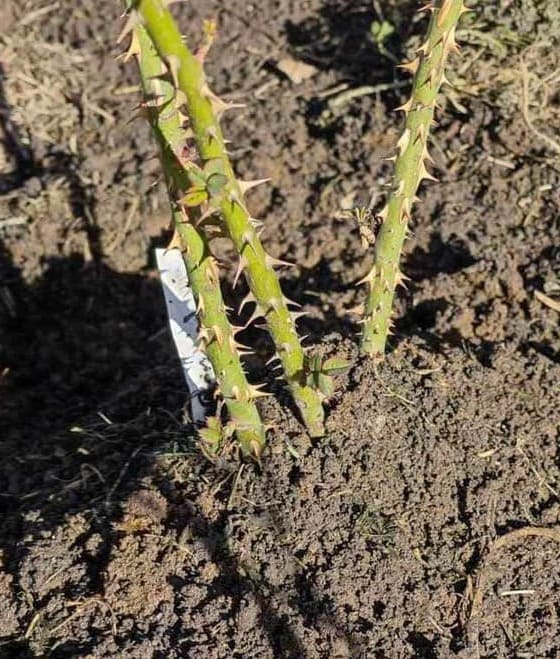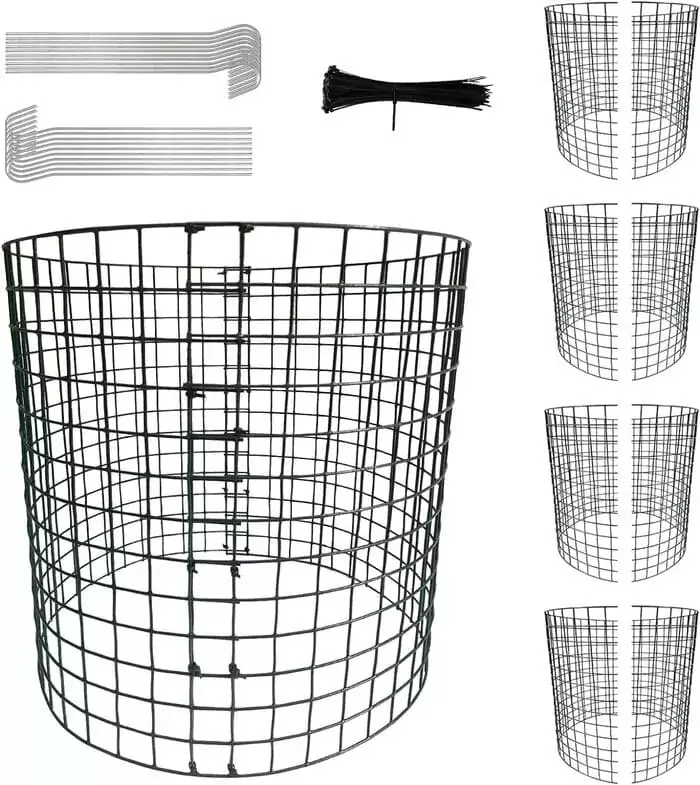As the crisp air of fall descends and daylight wanes, our beloved roses prepare for a winter slumber. While we reach for cozy sweaters and hot tea, our roses initiate a biological response triggered by the cooling temperatures – the production of abscisic acid. This natural cycle prompts the need for a protective measure: mulching. This section delves into the intricacies of mulching roses, exploring what it entails when to apply it, the materials to choose from, and valuable lifehacks from seasoned gardeners
What is Mounding Roses?
Mounding roses is a horticultural practice that involves creating a protective barrier around the base of rose bushes and extending it onto the canes. This barrier, often comprised of soil or mulch, safeguards against winter’s harsh elements. The mounds, reaching a height of 6 to 8 inches, play a crucial role in insulating the roses once they enter dormancy, ensuring their vitality for the upcoming spring.

When to Mound roses
Timing is critical when it comes to mounding roses. In regions experiencing hard freezes during winter, waiting until after a few freezes is advisable before initiating the mounding process. No additional measures may be required for those residing in USDA Hardiness Zones 8 and above, where freezing is less severe.
Fall pruning precedes mulching, and while significant pruning is discouraged at this time, trimming taller bushes is recommended to prevent potential wind damage. Ideal heights for non-climbing shrubs hover around five feet. This sets the stage for the winterization process.
Lifehack from experienced gardeners
I have a valuable life hack for you to ensure the well-being of roses in winter, taught to me by my colleagues.
If you have a wet site or are unsure that your rose may not overwinter well, treat the trunk and base of the rose with a double dose of fungicide before the first frost. This protective measure protects the rose from various fungal diseases, increasing its chances of successful winterization.
Winter Protection for Hybrid Tea, Grandiflora, and Floribunda Roses
Safeguarding the entire plant is essential for those cultivating hybrid tea, Grandiflora, or Floribunda roses in regions with colder temperatures. Commence the process by pruning the rose after it enters dormancy in the fall. This means trimming it to a more manageable size, facilitating more accessible protection.
Create a protective shield by surrounding the rose with a cylinder made of wire and sturdy posts (rebar). Stuff this cylinder to its brim with crisp, dry leaves or straw, and overlay it with sturdy material to thwart any sagging of the mulch when exposed to rain or snow. An old board or a garbage can lid, secured with a rock, serves this purpose well.
As spring approaches, approximately six weeks before the last frost, gradually remove the winter protection. Leave only a small pile of mulch around climbing roses. Remove the remaining mulch two weeks later and nourish the plants with a blend of compost and fermented manure.
Mounding by Mulching Roses for Winter
Choosing a suitable mulching material is crucial for adequate winter protection. Let’s explore these prominent methods:
The choice of mulching material can significantly impact the success of winter protection. Avoid fabrics that retain excess water around the soil and stems, such as grass clippings and whole, unchopped leaves. These can lead to root rot and threaten the plant’s health.
Consider finely ground pine bark mulch for a practical and protective winter jacket for your roses. This material forms a dense, insulating layer without clumping. Spread the mulch around the base of the rose, ensuring a depth of 6-8 inches. This technique is widely employed, even in prestigious rose gardens like Peggy Rockefeller’s Rose Garden.
In cases where the roses face harsher conditions, such as colder-than-nominal temperatures, additional precautions are necessary. Pruning should be conducted after the rose goes dormant, reducing its size for more accessible protection. Surround the rose with a cylinder of wire and sturdy posts, filling it with dry leaves or straw. Cover the top with a solid material to prevent the protective mulch from diminishing due to rain and snow.
Mulching Roses with Gravel for Winter
In rose beds adorned with pebble and gravel mulch, a straightforward approach involves using a small rake with rigid tines. Gently move the gravel mulch up and around each rose bush, forming protective mounds. These gravel mounds stand resilient through the winter, shielding the roses from the elements. As spring arrives, rake the mulch back, creating an even layer across the entire bed.
Mulching Roses with Soil for Winter
The process requires a bit more effort for rose beds surrounded by shredded cedar mulch. Move the mulch from the rose bushes, unveiling a circular area with a minimum diameter of 12 inches around the base of each plant. Employ garden soil from a bag devoid of added fertilizer, or use soil directly from the garden to create mounds. These mounds should have a 12-inch diameter at the base, tapering as they ascend.

Avoid fertilized soil to prevent unwanted growth when frost remains a possibility. Lightly water the mounds to help them settle, then cover them with the previously removed mulch. This added layer aids in holding the soil mounds in place, preventing erosion from winter snow or harsh winds. Come spring, separate the mulch and soil, reusing them for new plantings or as the base for a fresh mulch application.
As winter’s frost yields to the delicate caress of spring, your carefully tended roses will awaken from their winter rest, poised to adorn your garden with a vivid exhibition of colors and fragrances. So, embrace the intricacies of mulching and mounding, and let your garden be a testament to the beauty that blooms even in the coldest of seasons. Happy gardening!


